Much of my work over the past year has been connected with House of Treasures: 150 Objects from Canterbury Museum Ngā Taonga Tuku Iho, the Museum's book commemorating 150 years since we opened on our Rolleston Avenue site.
For this project, we commissioned photographer Jane Ussher to photograph 150 treasures from the Museum's collection.
I gave some of these objects a touch-up before Jane photographed them, and I also helped with the moving and positioning of the objects for the photography itself. Some of them are very delicate and we had to be careful not to damage them while taking their photos.
I was always interested to see Jane's reaction to the next object brought out; giant objects, teeny objects, strange objects, scary objects! She took it all in her stride.
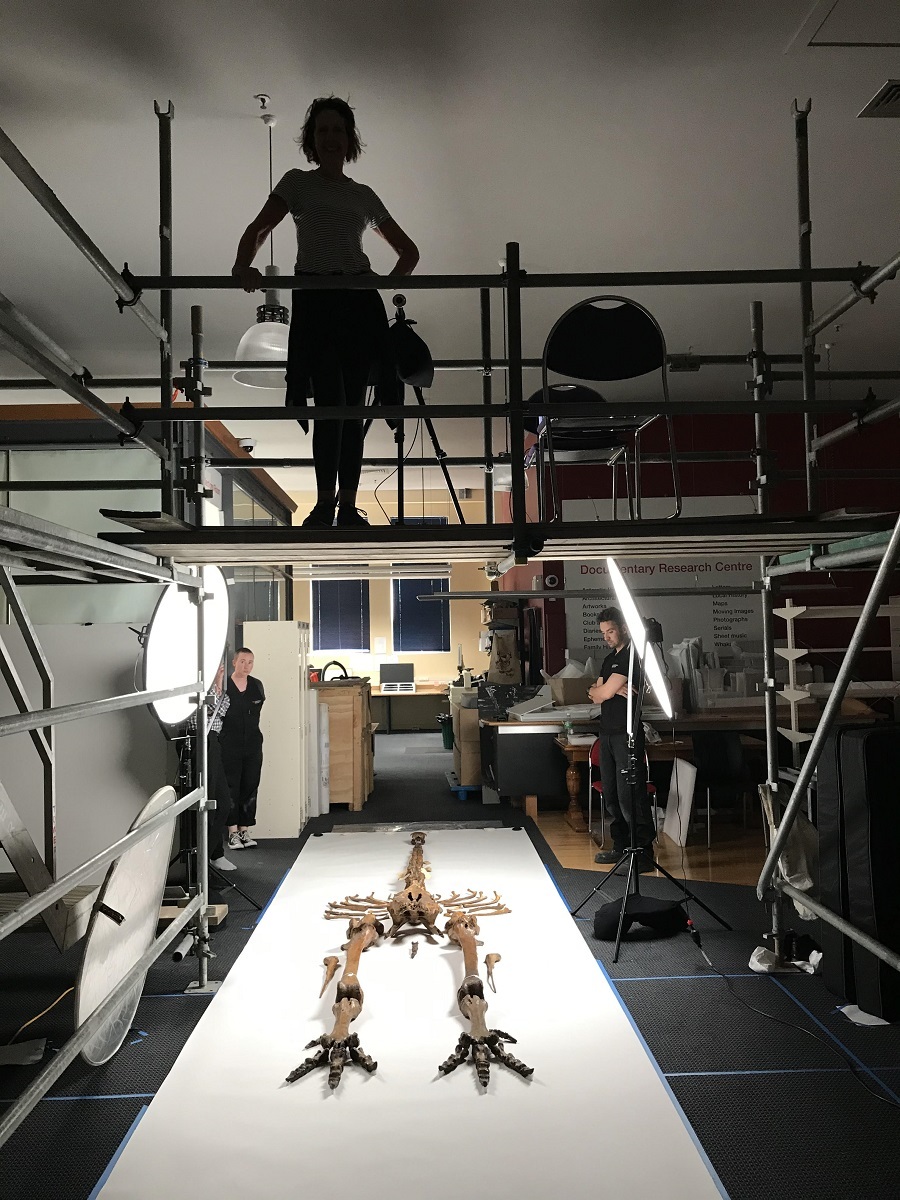
I thought I would go through a couple of the objects we conserved ready for the photography, starting with one of my favourites: the pygmy Javan rhino. On display in the Victorian Museum exhibition, it gets quite a lot of attention from the public. Its right ear was hanging off and its original sawdust stuffing was leaking out onto the plinth beneath.
Closer examination revealed the rhino's skin was split in several places and the original stitching had separated, allowing the sawdust to fall through. A number of historic repairs in different materials needed redoing too.
The rhino was gently dusted as its hide is very fragile. The splits were bridged with Japanese tissue and inpainted to match the surrounding area. The result is a pygmy Javan rhino with a secure ear and no more sawdust falling out! Ready for photography and display.

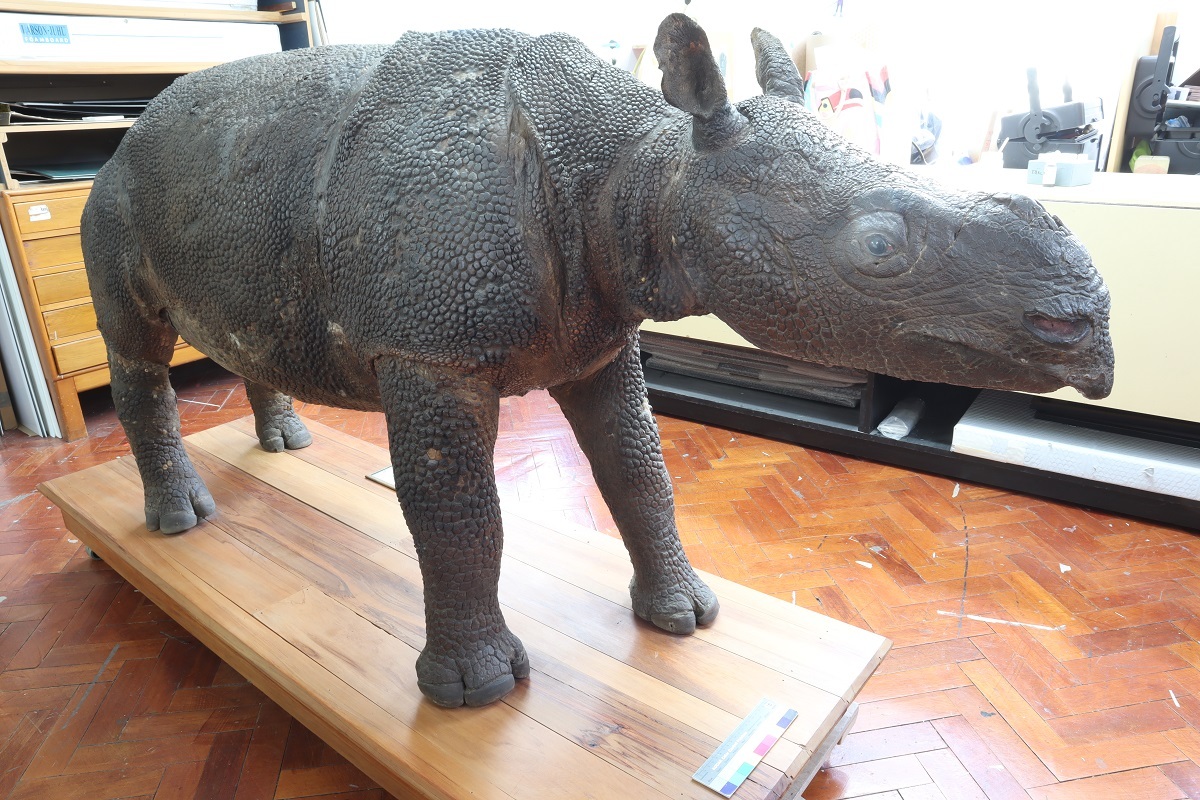
A lovely headdress made by the Dani people of Papua New Guinea came to the conservation lab to be checked before photography. It was stable and clean, so I initially thought treatment would not be required. However, a huge part of conservation is discussing with the curator the significance and gaining a better understanding of the object and where it came from – and Lisa McDonald, Associate Curator Human History, identified it as needing treatment! She discussed how the red shoelaces and string had been added to aid with packing when the headdress was being transported back from Papua New Guinea. They were not part of the object.
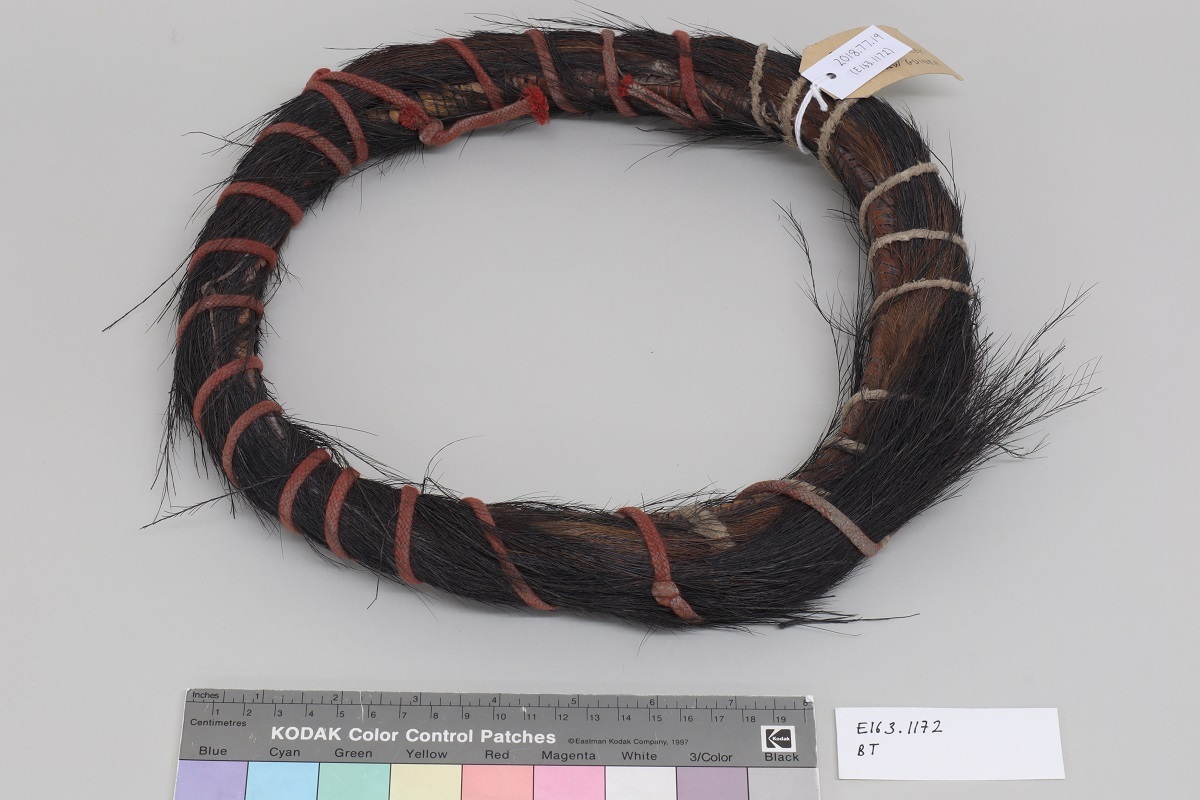
Armed with images of similar objects being worn, we discussed how best to return the headdress to what it would have looked like when collected, as its current state was misleading. Paul Scofield, Senior Curator Natural History, identified the feathers as cassowary. We decided to carefully remove the ties, but once this was done it did not spring back to its original position. There were indents in the feathers where the strings had been and the feathers appeared slightly brittle.
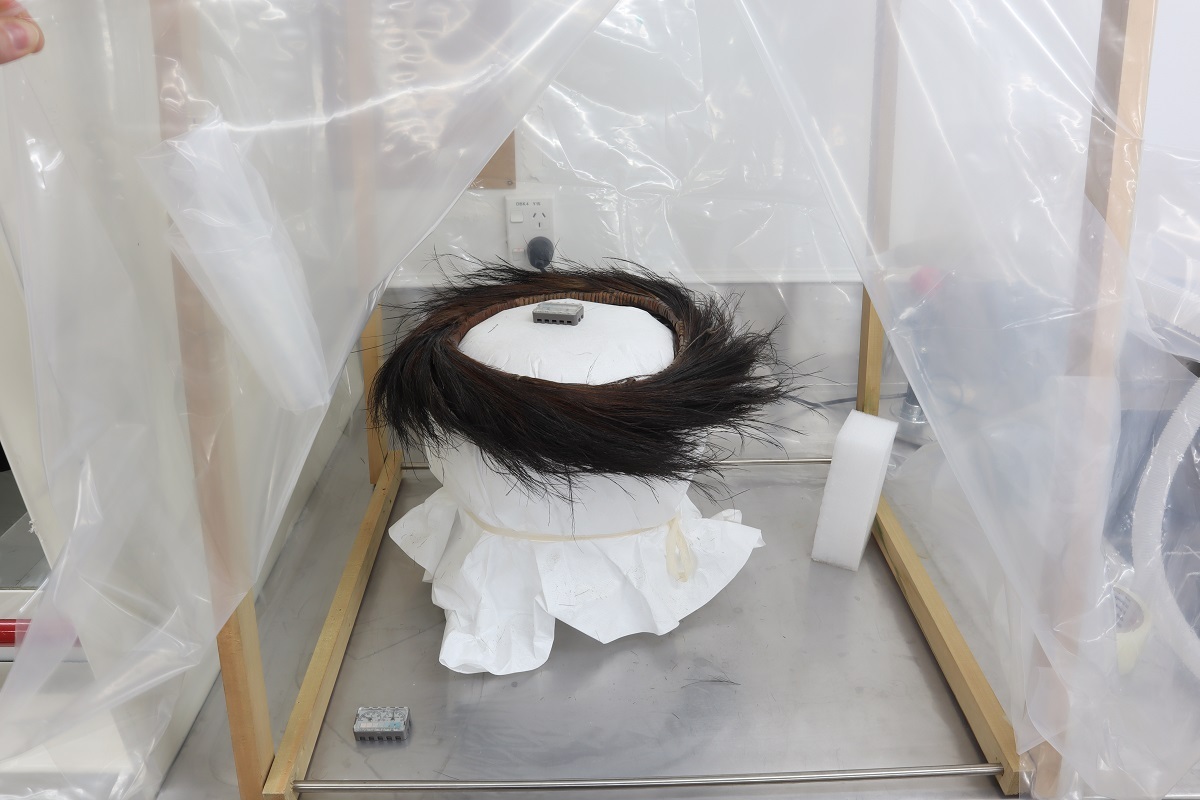
We decided to build a humidity chamber for the headdress and bring the humidity up to relax the feathers over several days. The headdress was placed on a porous material with an absorbent layer beneath to wick any condensing water away from the feathers. We introduced the humidity using an ultrasonic humidifier. The steam produced from this is a cold mist so it is very gentle. The results were very slow, but after a day there were no more indents and a section had sprung out! A few more days and the rest of the feathers moved out. Ready for its photo shoot!
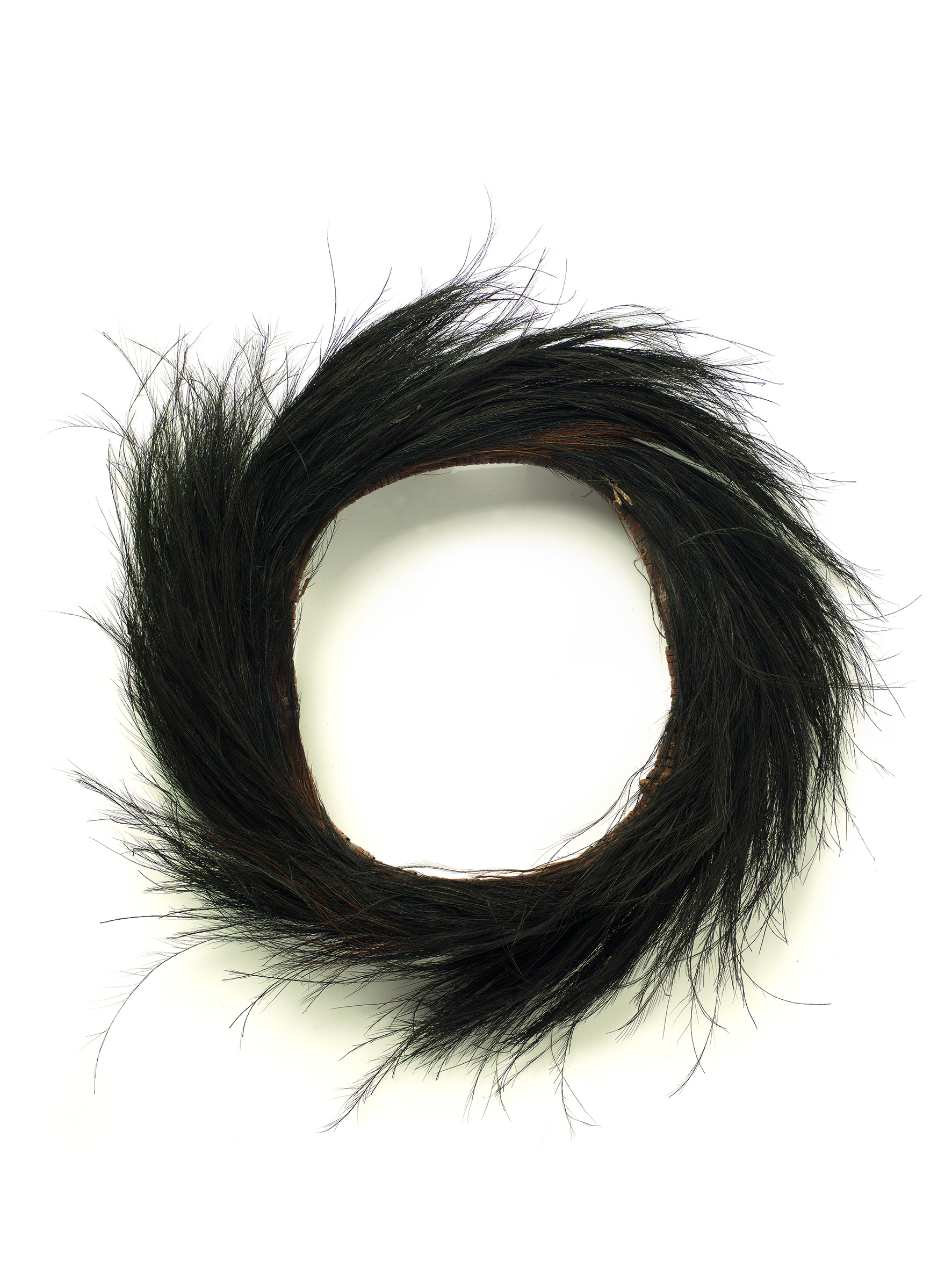
You can see Jane's photos of these objects in the book House of Treasures: 150 Objects from Canterbury Museum Ngā Taonga Tuku Iho, available for purchase from the Museum Store.





